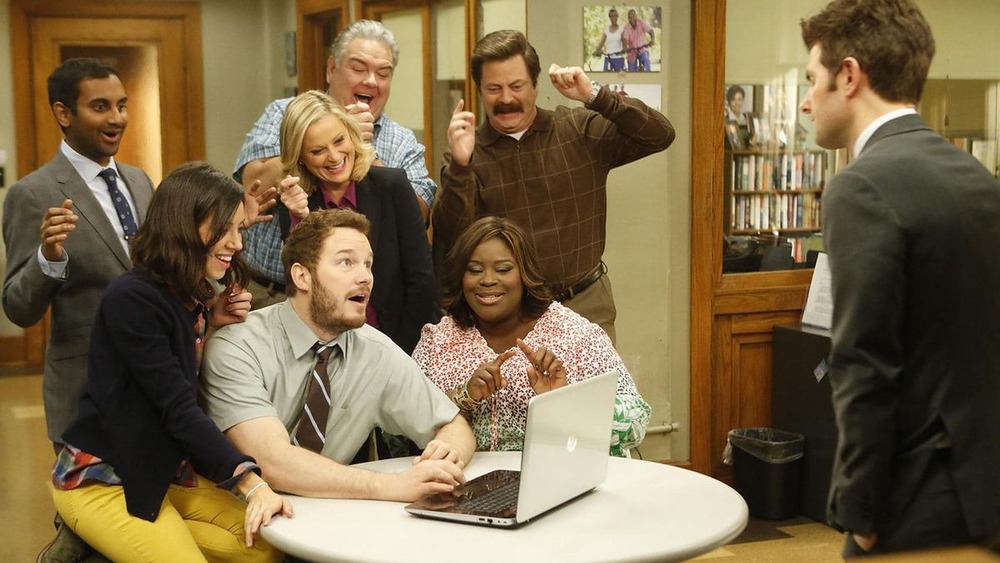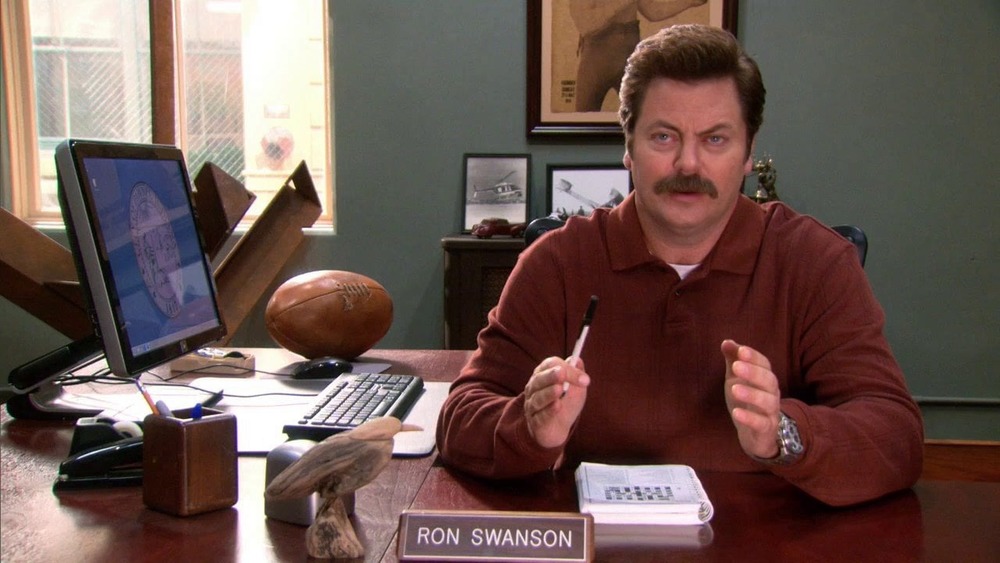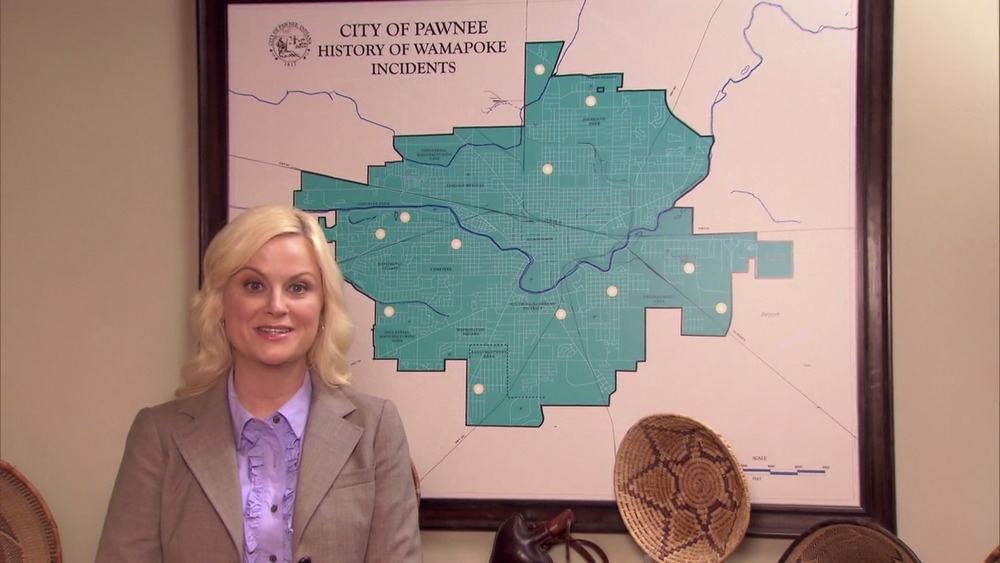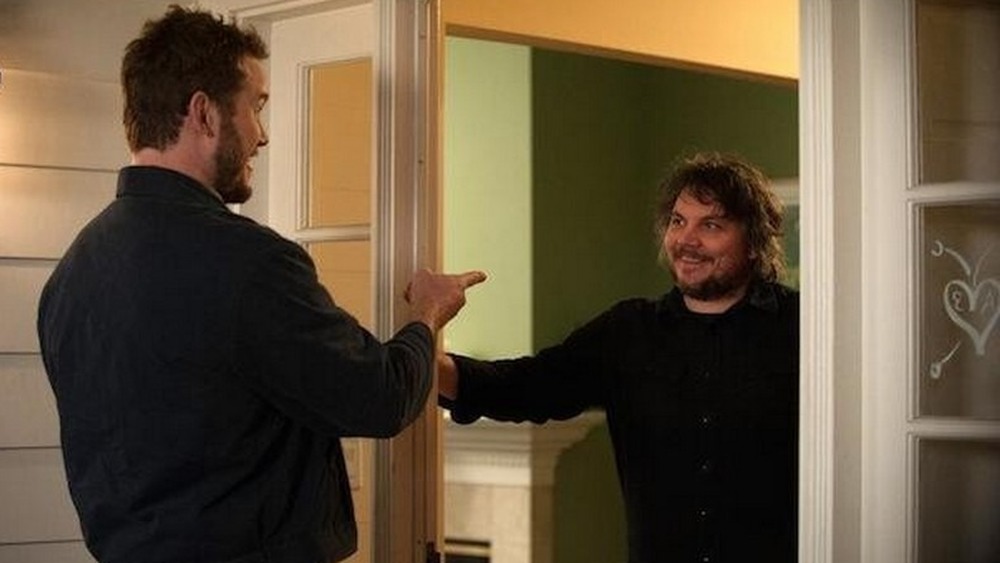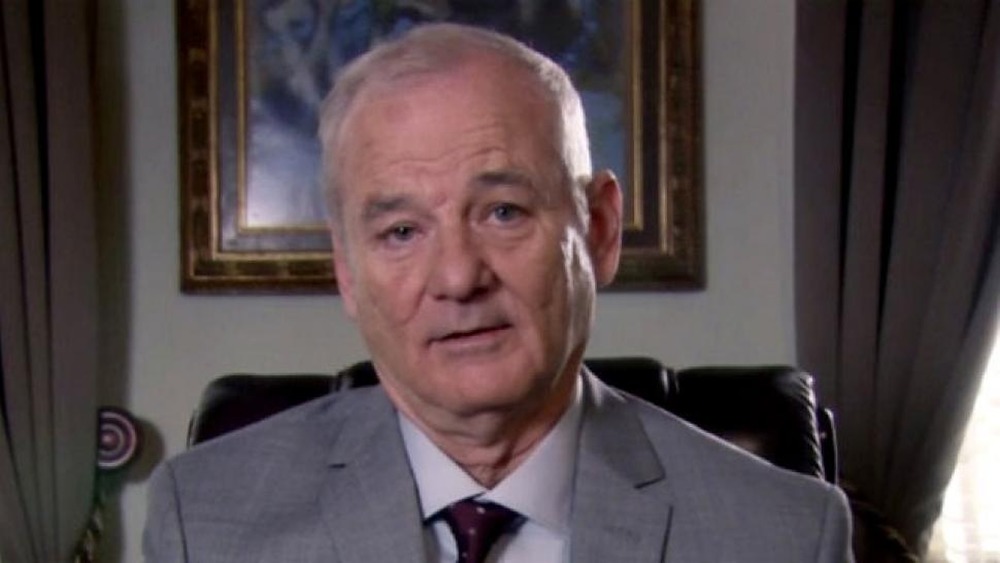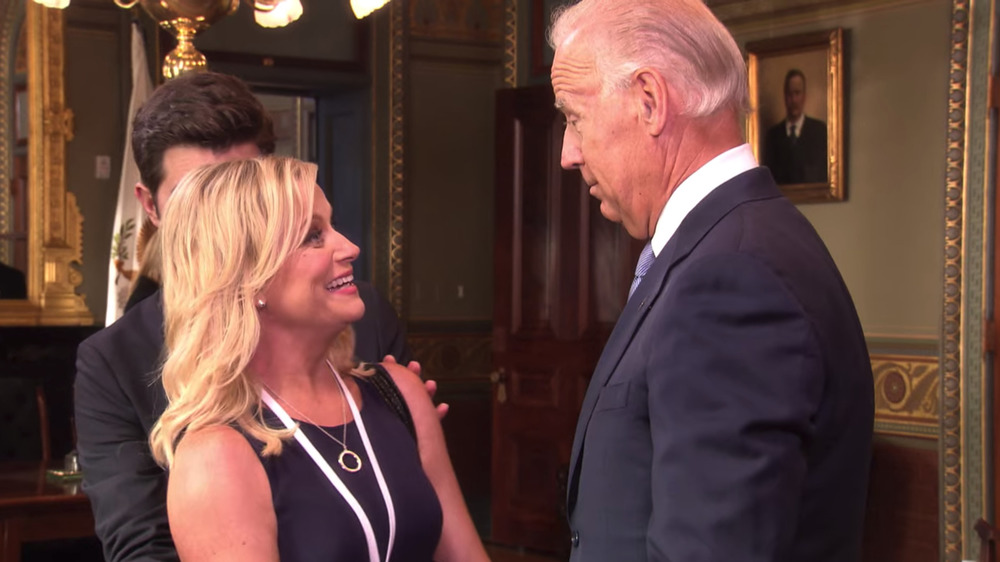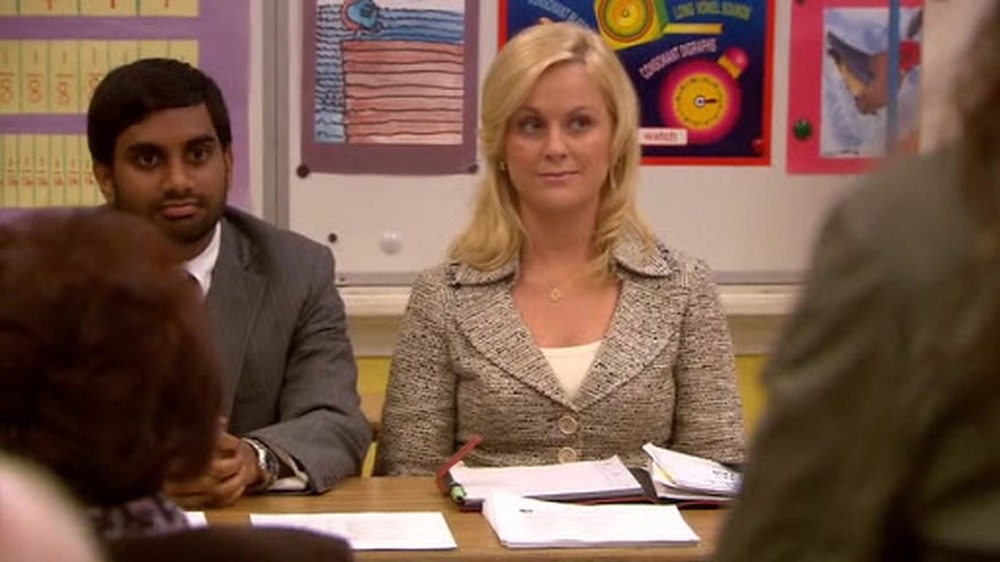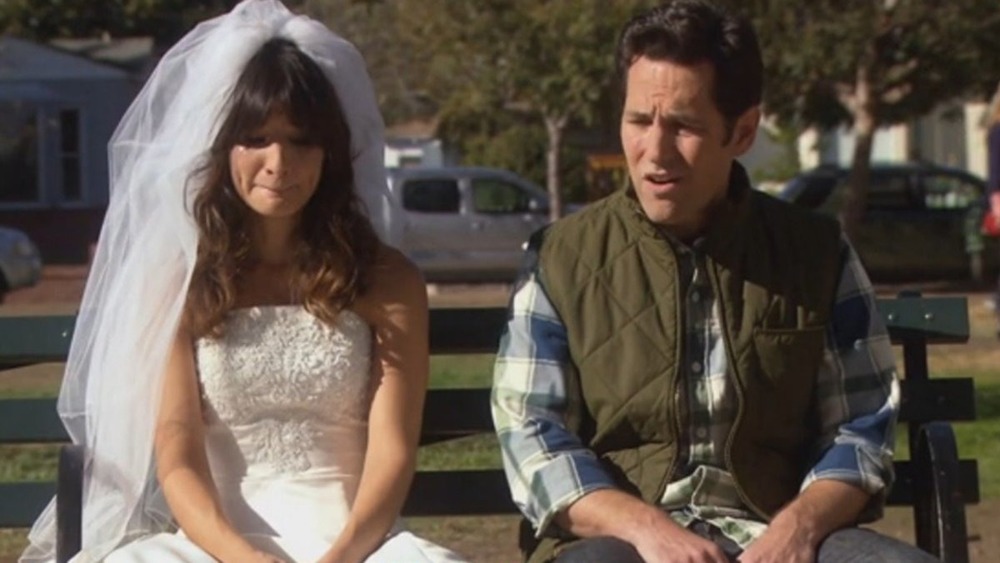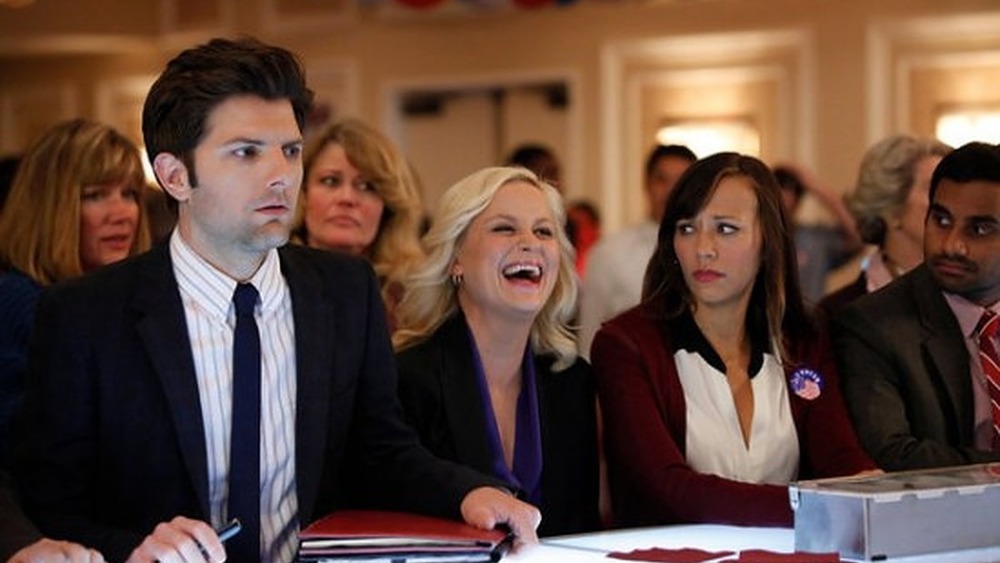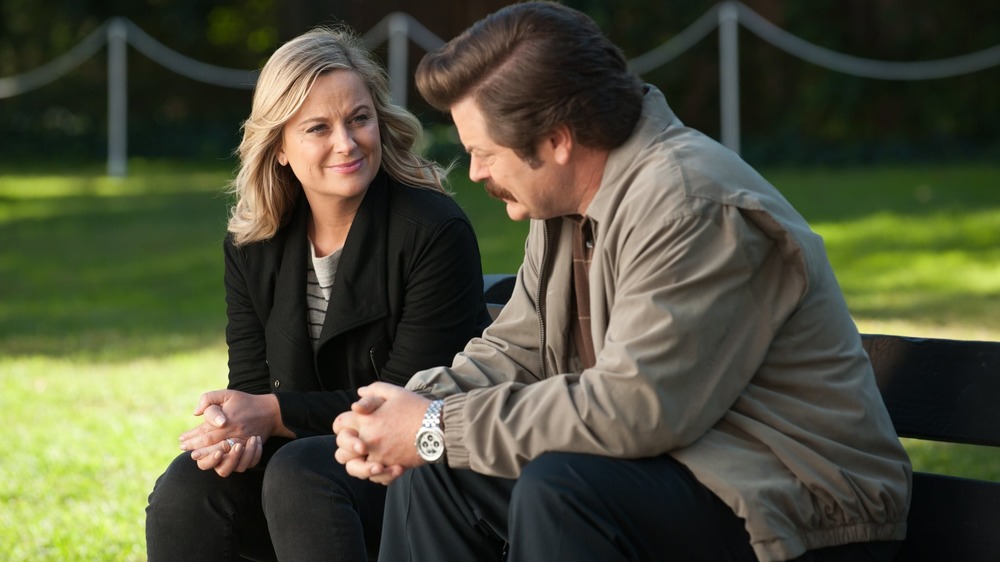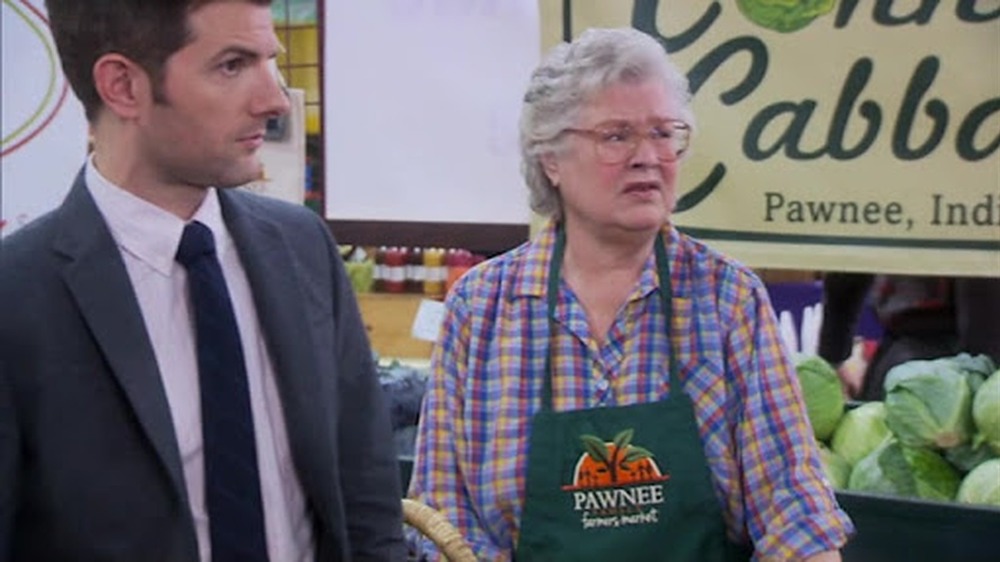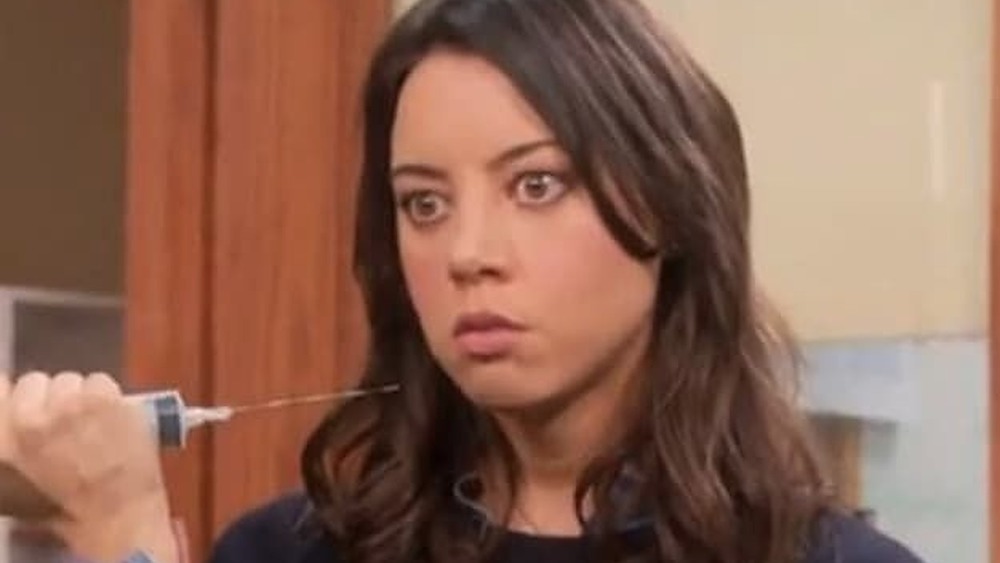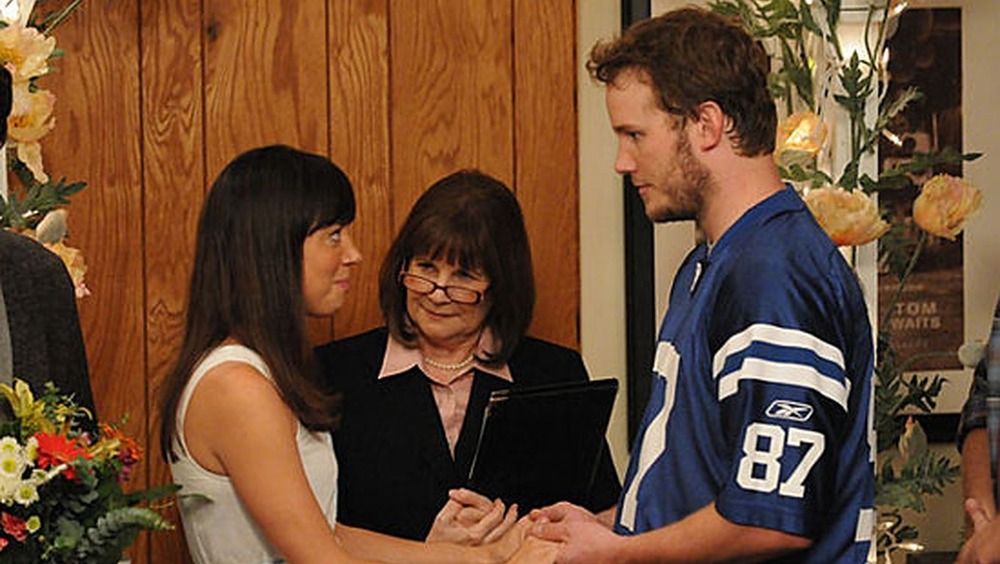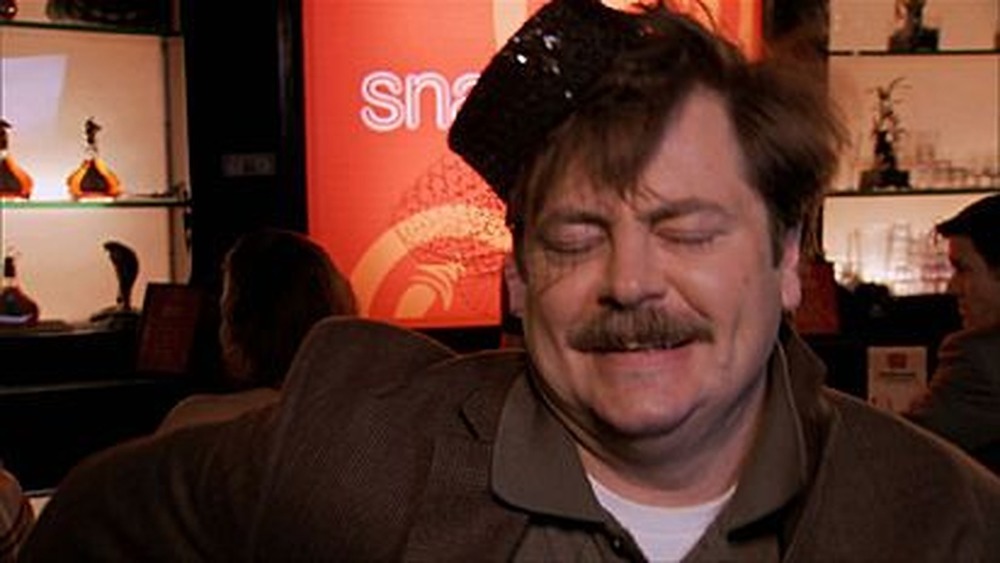Things About Parks & Rec Only Superfans Know
Of all the things you might spend six years getting to know and love, one of the last you'd expect is a small municipal government organization like the Pawnee Parks and Recreation Department. But Michael Schur's 2009 workplace sitcom grew to be one of the most beloved on television, expanding far beyond its original conception as a spin-off of The Office and giving us insightful yet lighthearted satire of government and society while celebrating the best parts of being human.
The show was unique in every way — in both the challenges it faced and the innovations it met them with — and from conception to execution, there are a lot of fun behind-the-scenes and not-so-little-known facts that endear fans to the show even more. However, while fans of Parks and Recreation are as dedicated to Pawnee lore as Leslie Knope herself, some truths about the series would surprise all but the most devoted among them.
The real Ron Swanson
There are many theories about who inspired the legendary Ron Swanson. Many people think he is based on a real person. Some fans of both The Simpsons and Parks and Rec are convinced that Ron is based on a burly, mustachioed The Simpsons writer named John Schwartzwelder who, like Ron, is known for being reclusive. He loved meat and libertarianism, and Greg Daniels, who co-created Parks and Rec, worked with him on The Simpsons for a few years.
Daniels did at one point mention that while they were doing on-the-ground research in different cities on what it was like to work in local government, they were toying with the idea of making Leslie's boss anti-government. The Burbank elected official they were discussing this with commented, "Well, I'm a libertarian, so I don't really believe in the mission of my job." Libertarianism became the backbone of Ron's friendly antagonism toward Leslie. But the similarities stop there, and at the end of the day, the Burbank official simply uttered a very Ron-like line that inspired them to create the character the way they did.
In fact, Michael Schur explicitly said on Twitter that Swanson had "no real-life referent." The only real person with a set of personality traits that served as a direct inspiration for Ron is, actually, actor Nick Offerman himself. The similarities run from Tammy Two being his wife in real life to his woodworking, suave saxophone playing, and other "manly" activities.
Map morphs and nods to Indiana
The map of the fictional city of Pawnee is actually a map of Muncie, Indiana, flipped upside-down. If the name sounds familiar, it's because Muncie is Jerry/Garry/Larry/Terry Gergich/Gengurch's favorite town. Multiple maps on the walls appear to be cities in Indiana and elsewhere flipped or morphed in one way or another, or other altered maps: The Pawnee Parks map, for example, is a de-labeled map of Christchurch, New Zealand — with a lot of the green spaces removed, because there is considerably less vegetation in the middle of Indiana (unless you're in Eagleton).
There are many nods to Indiana in the show besides the more obvious instances like appearances by Pacers players or Donna's mural of famous people and objects from Indiana. More subtle allusions include the common appearance of beers from an Indiana brewery called Upland Brewing Company. The best part is, the brewing company has locations in two places in the United States, Indiana and California, which, respectively, match the state Parks and Rec is depicted in and the actual shooting location of the show.
Less obvious musical guest appearances
As Parks and Rec gained popularity, the producers were able to secure cameos from a number of awesome musical guests. The Pawnee/ Eagleton Unity Concert featured in the season 6 finale went all-out in this regard. Some of the artists, like The Decemberists and Ginuwine, portrayed themselves, with Ginuwine performing "Pony" in honor of Li'l Sebastian (though we know there is a big difference between a pony and a "little horse").
Others came in disguise: Yo La Tengo appeared as a red-sweater-wearing Night Ranger cover band called Bobby Knight Ranger. Jeff Tweedy from the band Wilco played the lead singer of the fictional band Land Ho! who, after some convincing, agreed to reunite the band to play the Unity Concert.
And of course there's Retta, who plays Donna Meagle and is actually a former opera singer (while that's pretty clear if you've heard her sing on the show, you might not have known that for sure). The theme song also qualifies as a "musical guest" of sorts, as it was submitted by musicians Gaby Moreno and Vincent Jones to a contest soliciting theme music for a new Office-like mockumentary.
Mayor madness
Amy Poehler joked in 2011 (and has reiterated the sentiment multiple times since) about how badly she wanted Bill Murray to play the mayor of Pawnee. For a long time, this character was never depicted onscreen, but that did nothing to dampen the level of interest fans had in him, as every mention of Mayor Walter Gunderson's personality and goings-on was just a little bit odd.
It has been suggested in the series that he had an affair with court stenographer Ethel Beavers. We also know from the Parks Department members' holiday skit that he had a crazy dog named Rufus. When a possum bit Rufus, the mayor launched a vendetta against the pests, to the point that Andy mistakenly believed that it was the dog himself who was giving the orders to hunt down the possums.
Even when we finally got to "meet" Mayor Gunderson, it was with an asterisk: Murray's brief role as the infamous but beloved official came in the form of a video message to his citizens, played after his death following 39 years in office. Oh, and he also appeared as the mayor's body in the open-casket memorial. Though we never got to see him alive, it certainly seemed like we knew him. Murray's portrayal had to be almost as big a dream come true for the cast as when Joe Biden and Michelle Obama appeared on the show.
V.P. V.I.P.
Though he only appeared for a few moments, it was actually really complicated to shoot the scene involving Vice President Joe Biden. There was of course the inherent complexity of safely including such a high-profile official, as well as all the politics involved in making the choice without seeming to promote one candidate over another (at the time of filming, the creators didn't even know who the Republican nominee for president would be).
The difficulty was heightened by the fact that the episode was filmed in July 2012, before the election happened that November — but it was scheduled to air after Election Day. What if Biden hadn't been re-elected? A just-in-case version of the scene remained mostly the same but included an extra line on Leslie's part hinting at consolation for an undesirable outcome.
One tiny piece of trivia didn't become a reality until five years after the show's conclusion: Just before meeting Biden, Leslie says that she plans to win the presidency in 2020. In reality, Joe Biden himself won the presidency that year (after Ben remarks that 2020 seems a little ambitious, Leslie adjusts her sights to 2024, so we should start keeping an eye out).
Character change
If you noticed Leslie getting less "doofy" (as Ann Perkins puts it) after the first season, you're not alone: Her character was changed after the first season to make her less like Michael Scott and more of a self-possessed, intelligent protagonist you could root for. The craziest part is, at the time of casting, the show didn't even have parts yet, which made for a very unconventional audition. The talent of the cast and writers was always there, they just had to find their footing.
Parks and Recreation went through all manner of challenges and odd circumstances over its seven-season run, from Amy Poehler's pregnancy — which forced the third season to fit around her due date — to the lackluster reception that almost killed the show after the first season. This feedback was partly due to the difficulty of critics and audiences alike in finding the justification for another workplace mockumentary with a naive lead.
But Leslie's season 2 character development, along with the efforts of the cast and crew, took care of that. Through it all, both the production (and the actual characters) adapted to the needs of an audience that grew to depend on them for laughs and heart.
Unfinished stories
There's a producer's cut of the Parks and Rec finale that tells us Shauna Malwae-Tweep, Bobby Newport, and Jeremy Jamm's futures, which were deleted from the final version. It's available on DVD now, and here's a sneak peek: Shauna Malwae-Tweep is left at the altar by her fiancé, another in a long line of romantic misfortunes for the Pawnee Journal reporter. Bobby Newport then sees her crying on a park bench, and only five hours later, the two get married. Councilman Jamm, a professed lover of Asian culture, ends up working at a hibachi restaurant in Florida.
These futures would no doubt have been incredibly entertaining to see, and it's a shame they had to be edited out. In fact, according to the first season's DVD commentary, the show shoots an absurd amount of footage per episode, more consistent with production of an actual documentary than a sitcom. Amy Poehler stated that for every episode, there could probably be a second show pieced together from what's been edited out. So does this technically mean the show ran for fourteen seasons?
Speaking of stories we never got to see...
It's hard to imagine, but Leslie almost really did lose to Bobby Newport: There were actually multiple endings shot to the season 4 finale, "Win, Lose, or Draw." (Can you guess what the three different endings were, based on the title?) It was actually agony trying to pick between winning and losing scenarios, and there was a lot of back-and-forth because there was merit to both for the whole arc of the series.
So when Ben says he didn't write a concession speech for Leslie, knowing she wasn't going to need it, perhaps this wasn't entirely true. There probably is a draft of a script somewhere in which Leslie does indeed have to give that speech. Though we wanted her to win, we can definitely respect the creators of Parks and Recreation for making it such a brutal fight.
Not only that, but to have her recalled after her first year (in a way, living out a version of that alternate ending) was a much-less-lighthearted-than-usual way of highlighting the discouragement and stagnation that often plagues bureaucratic institutions. But that misfortune showed us that even if that darker alternate ending had come to pass in the original election, she doubtless would have still moved on to bigger and better things.
The (literal) gag reel
There is even more they've been hiding from us, but you may not want (or ever get) to see it: According to Amy Poehler at 2013's Paleyfest, Ron and Leslie — though it was very clear that they were never romantic options for each other — make out every season on camera, just for the gag reel. But Schur notes that it never actually makes the gag reel, because it's "super disgusting to watch." You've heard of will-they, won't-they, but to fans and cast alike, this pair is just a won't-they.
In the vein of uncomfortable things that should remain hidden, there were multiple real flashings on the show. During the second season, when Andy Dwyer shows up naked to Ann's door in an attempt to win her back and finds Leslie there instead, Chris Pratt flashed Leslie for real instead of wearing a skin-colored suit as planned, in order to get the most genuine reaction. And Li'l Sebastian's nether regions were constantly blurred out because, according to Jim O'Heir, he was nearly always aroused.
Local flavor
Producers wanted a local Indiana product in a farmer's market scene, so the owner of U-Relish farms renamed one of her crockpot mixes "Pawnee Chickpea" — and actually sold it for a while! There are many "props" from the show you can get in real life, including Leslie's book Pawnee: The Greatest Town in America. Universal even held an auction in 2017 that featured a Snake Juice bottle set, an autographed photo of Johnny Karate, and an "I Met Li'l Sebastian" T-Shirt.
The show absolutely created its own little universe, parts of which found its way into ours, and rural Indiana was at the center of this microcosm. This is part of what made it so special when, by the sheer force of her passion and will, Leslie expanded her world from a small department in the government of a small town all the way to the federal level.
All about April
Aubrey Plaza, who shares a birthday with co-star Nick Offerman, had a character written specifically for her after Allison Jones, one of the casting directors on Parks and Rec, called Michael Schur and told him that she had just met the weirdest girl she'd ever met and Schur needed to put her on his show. Plaza came to his office and "for an hour, made [him] more uncomfortable than [he'd] ever been." And then she got paid to do the same for seven seasons!
Her husband-to-be on the show, Andy, also earned his place in the ensemble after he was never meant to persist beyond a guest-starring role in season one, and the two captivating characters often prepare for scenes by pretending their characters are high on marijuana. Another inspiration for Plaza's iconic performance is her real-life sister Natalie, on whom Plaza bases many of her moody-young-girl characters. She also has a sister named Natalie on the show, who she does an impression of in the talent portion of a beauty pageant.
April and Andy's story
April and Andy were a seemingly unlikely and then strangely perfect pairing. But this couple's story together was almost as unplanned as the trajectories of their individual characters. They were put together in a B-plot in one episode where their potential romantic trajectory was meant to subtly begin, and it turned out that they had great chemistry: Writer and producer Alan Yang called it a combination of planning and serendipity.
Apparently, in the episode "Hunting Trip" when the rest of the cast is off at the hunting lodge and April and Andy are alone at city hall, Chris Pratt turned to Greg Daniels before they started shooting and said, "I'm going to make her fall in love with me." And that's exactly what he did. (And the audience fell in love with both of them.)
Then an NBC promo basically spoiled the pairing by accident! Weeks before the episode in which the two got married was scheduled to air, and before they had even started officially dating, the network aired a promo that mentioned a wedding registry for April and Andy. NBC hustled to cover up the mistake, referencing Ron and Tammy's wedding instead, but a few weeks later when April and Andy did get married, audiences realized the mistake. Nothing could really spoil this couple except a bad game of Know Ya Boo!
Wear your heart on your face
Poehler reveals in her book Yes, Please that the show intentionally let minor makeup and lighting malfunctions slide so as to give actors maximum time in front of the camera to improvise and really get into the scene — which is great, because the show is famous for so many wonderful improvised and unplanned moments. When Andy and April forget to pay their cable bill, Andy acts out his favorite movies in their entirety instead (and ends up smashing his TV); we get to delight in Snake Juice-fueled talking heads in the Snakehole Lounge, one of which involves Ron wearing April's lace hat; and there are even a couple of improvised lines from VP Joe Biden!
None of the loyal audience members would have cared if a hair was out of place when the Parks Department employees were drunk on Snake Juice. The heart of the moment was more important than what the moment "looked like." Which is something you can also say about most moments in the deceptively undesirable city of Pawnee.
